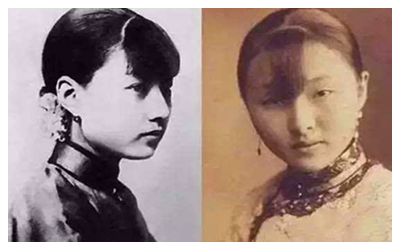Skype: neodalle-travel
Tel: +86 135 7447 2266
E-mail: sales@visitaroundchina.com

 From the end of the Guangxu reign till the beginning of Republic of China (1908-1912), the popular bun types of Chinese women included Luoji (spiral bun), Baoji (pack bun), Lianhuanji (interlinking bun), Chaotianji (skyward bun), Yuanbaoji (Yuanbao-shaped bun; Yuanbao is a shoe-shaped gold or silver ingot), Baoyuji (abalone-shaped bun), Xiangguaji (muskmelon-shaped bun), Kongxinji (hollow bun), Panbianji (bun formed by rounding the tail), Mianbaoji (bread-shaped bun), Yiziji (line-shaped bun), Dongyangji (Japanese bun), Zhuimaji (bun like a person falling off a horse), Wufengji (dancing-phoenix bun) and Hudieji (butterfly bun), etc.
From the end of the Guangxu reign till the beginning of Republic of China (1908-1912), the popular bun types of Chinese women included Luoji (spiral bun), Baoji (pack bun), Lianhuanji (interlinking bun), Chaotianji (skyward bun), Yuanbaoji (Yuanbao-shaped bun; Yuanbao is a shoe-shaped gold or silver ingot), Baoyuji (abalone-shaped bun), Xiangguaji (muskmelon-shaped bun), Kongxinji (hollow bun), Panbianji (bun formed by rounding the tail), Mianbaoji (bread-shaped bun), Yiziji (line-shaped bun), Dongyangji (Japanese bun), Zhuimaji (bun like a person falling off a horse), Wufengji (dancing-phoenix bun) and Hudieji (butterfly bun), etc.
 Ask Questions ?
Ask Questions ?